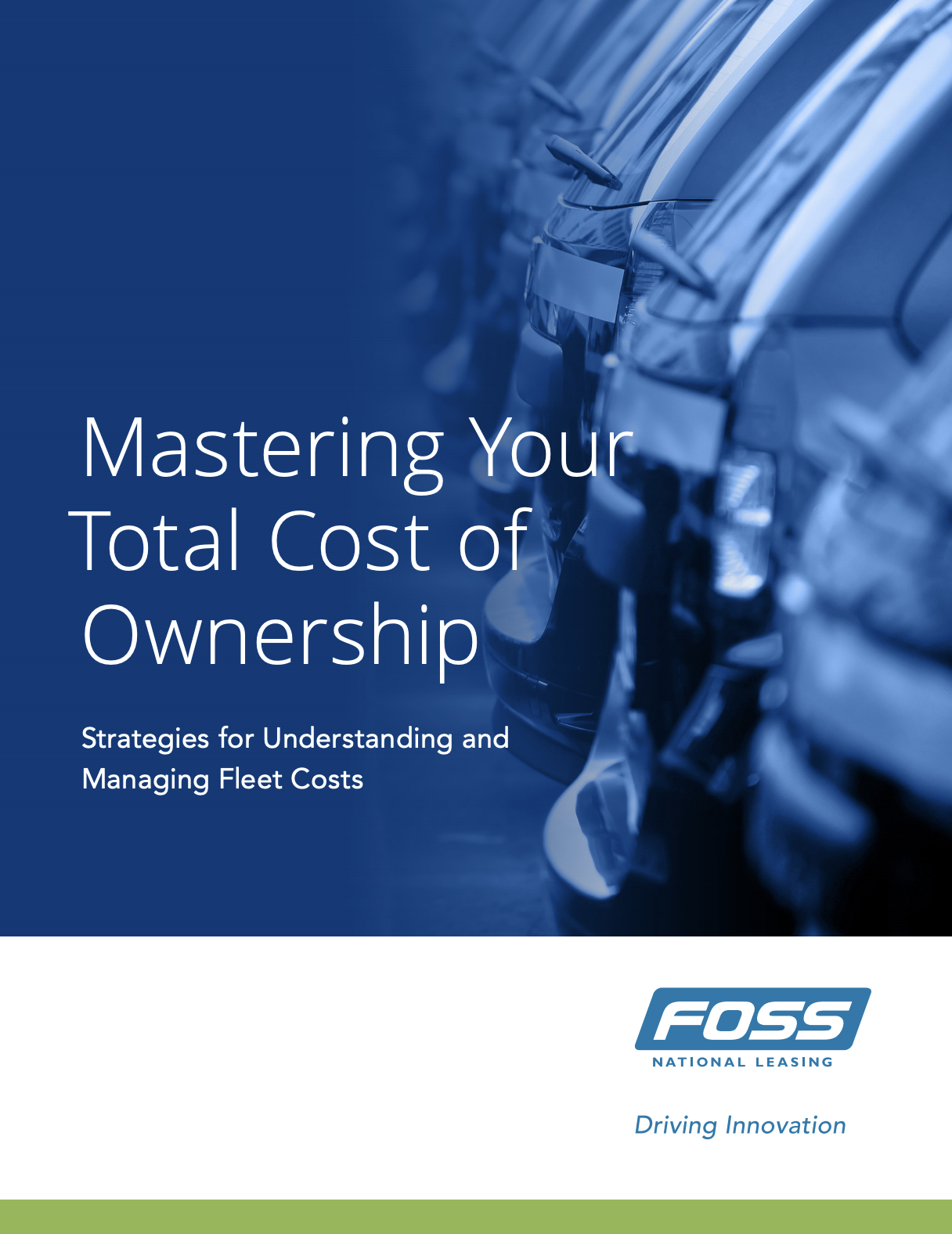
If you're not closely examining your fleet's total cost of ownership (TCO), you're probably losing money. Learn how to analyze TCO and save money for the joyful things in life.
Today, we’ll look at the full fleet life cycle and discuss how fleet management cost analysis can help you. We’ll also share why a fleet management company is an essential partner in helping you reduce your fleet TCO.
What is a Fleet Vehicle Life Cycle Cost Analysis?
A fleet vehicle life cycle cost analysis is a comprehensive process used to determine the total cost of owning and operating a vehicle throughout its entire useful life in a fleet. This analysis considers both fixed and variable costs over the vehicle's entire service period.
Key components of a Fleet Vehicle Life Cycle Cost Analysis include:
- Fixed costs:
- Initial purchase price
- Depreciation
- Insurance premiums
- Financing costs
- Operating costs:
- Fuel consumption
- Maintenance and repairs
- Tires
- Driver/operator training and pay
- Staff costs and overhead
- End-of-life considerations:
- Disposal costs
- Trade-in, resale, or salvage value
A vehicle life cycle or fleet management cost analysis is the only way to:
- accurately calculate your TCO from the initial purchase to the sale of the vehicle
- find key money-saving opportunities, and
- eliminate waste.
This analysis allows you to compare similar and different vehicle styles, helping you determine the best overall fit-for-use vehicles for your fleet.

Understand your fleet's total cost of ownership with the help of this free PDF guide >>
Why Calculating Calculating Total Cost of Ownership so Important in Reducing Fleet Costs?
Fleet managers often assume that buying cheaper vehicles is the best way to save money in the long term.
Well, is this true?
Not necessarily! In fact, sometimes, vehicles with higher purchase prices actually cost less over the long haul.
A proper cost analysis will help you choose and upfit a vehicle that will be worth more at the end of your lease. Fleet managers often overlook the sale value at the end of the term. Typically, less expensive cars age faster than “the right vehicle for the job.” If the resale value is higher, your TCO will be lower.
Life cycle analysis can also help you
- determine the best time to sell a vehicle for the highest returns.
- forecast and allocate budgets more accurately by understanding the total costs involved in vehicle ownership
- compare different vehicle models and brands to choose the most cost-effective options
- develop effective maintenance schedules to minimize downtime and extend vehicle life
At the end of the day, a life cycle cost analysis will improve your bottom line. That’s really the biggest benefit. By paying attention to these details, you can fine-tune your operational costs to reduce your TCO.
How Can I Complete a TCO Analysis For My Fleet?
For many fleets, doing this type of intensive analysis is a struggle. The challenge is in creating accurate cost profiles for each of your vehicles.
It’s difficult to get the data you need on your own. To obtain this data, you would have to:
- take into account the full history of your current vehicles
- find a way to access the future market value of your vehicles
- estimate the lifetime fleet maintenance costs
- consider the effects of inflation and fluctuating interest rates and how those affect costs
You would then need to create records that you revisit, track, and update regularly. It would be even better if you could collect real-time data about your vehicles. It’s no small task.
This is why most fleets choose not to undertake this analysis on their own and instead opt to work with a fleet management company (FMC).
How Can a Fleet Management Company Help Me?

A FMC has extensive records of historical data, so it can accurately predict the total cost of ownership for any vehicle. This gives you the full picture of what your vehicles will cost you over time.
An FMC is brand agnostic, meaning they don’t support one manufacturer over another. They look at all of a vehicle’s variables in an unbiased way, including:
- Capitalized cost
- Total lease expense
- Buy vs. lease vs. rent cost
- Fuel
- Preventative maintenance
- Miles driven
- Wear and tear
- Depreciation
- Ending fair market value
- Cargo volume
- Warranty
Working with an FMC helps you maximize your cost savings and utilize cost-effective strategies in terms of:
- maximum rebates and discounts
- personal use charge recommendations
- delivery timing, and
- maximizing resale values.
Ultimately, partnering with an FMC means you can make informed decisions about what’s best for your fleet without owning the data. You’ll be able to choose the vehicles that will lower your fleet TCO and cost per mile in the long run.
Final Thoughts
Don’t underestimate the importance of doing ongoing life cycle cost analyses for your fleet. It will help you save money, get higher returns at the end of your lease, and choose the best vehicles for your fleet. Partner with an FMC to get the most accurate data possible, and you’ll be well on your way to reducing your total cost of ownership and fleet management cost.
Next Step:
Download our white paper below to get a deeper understanding of your TCO as a whole and learn how to reduce costs.
Get to Know the Author
Dave is a highly motivated, innovative and results-oriented sales executive. He is passionate about coaching and sustaining high-performance teams that enhance the customer experience and achieve business objectives.
He knows the fleet business from the ground up with over two decades of fleet management experience. He has held several senior management roles overseeing new business development, customer satisfaction, account management and operations.
Dave maintains a keen aptitude for continually assessing and adapting to the needs of clients.
Meet our team






